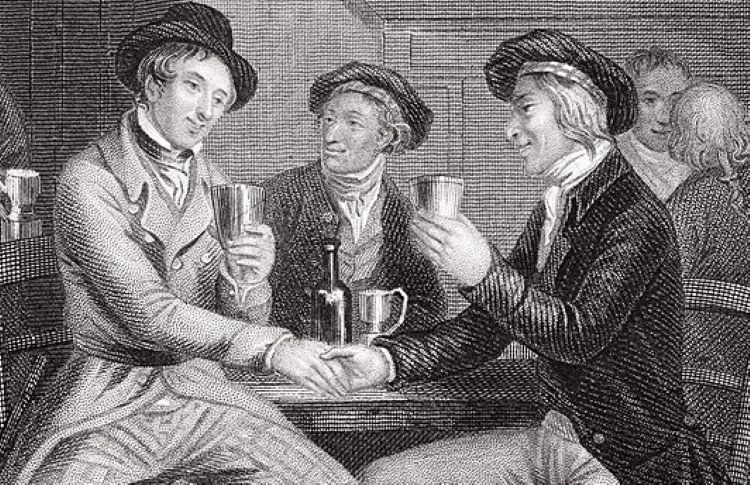Image: Illustration to Robert Burns’ ‘Auld Lang Syne’ by J.M. Wright and Edward Scriven. The Complete Works of Robert Burns: Containing the Poems, Songs, and Correspondence. Illustrated By W.H. Bartlett, T. Allom, and Other Artists. With a New Life of the Poet, and Notices, Critical and Biographical[1] by Allan Cunningham. Published in London by George Virtue, n.d. but c.1841.
As we approach the end of 2022, a reminder of research by Morag Grant of Edinburgh University which hit headlines in Scotland earlier this year for revealing that we link arms in the final verse of Auld Lang Syne because of the song’s early adoption by Freemasons.
Grant’s book deals with more than just arm-linking, tracking the remarkable history of Auld Lang Syne, including its spread around the world as a celebration of perennial friendship. Burns didn’t compose it – he found it – but his relationship with 18th century freemasonry meant that some of these songs were recirculated with that particular tradition’s values of universal brotherhood to the fore of the reception meanings.
Freemason networks were important to Burns in raising subscriptions for his poetry in publication, in circulating his songs, and indeed in his revival in the celebratory Burns Nights rituals from the Burns centenary of 1859 onwards. Linking arms in the masonic ‘châine d’union’ was a stronger gesture than the mere handshake shown in the image heading this post.
Unity and friendship, reunion and parting; these themes resonate beyond Scotland. In the 19th century the song spread widely in England and North America, and even through Germany. In the 20th century, it replaced national songs in some areas where previous songs of amity had been tarnished by fascist associations. Today, it seems to be global, its pentatonic tune even featuring comfortably at the closing ceremony of the Beijing Olympics in 2008 as the torch was passed from China to London.
Grant’s book is a fascinating study in the function of songs in confirming and celebrating group identity – and for this song, not only Scottish identity, it seems. Supporting the message of union promoted by this song, fittingly, the book is currently available as a free download from Openbook publishers.
Further Reading
- Morag Grant, Auld Lang Syne: A Song and its Culture (OpenBook Publishers, December 2021)
- David McCrone, ‘Whose Song is it Anyway?’, in Scottish Affairs, v.31(2) (2022)

